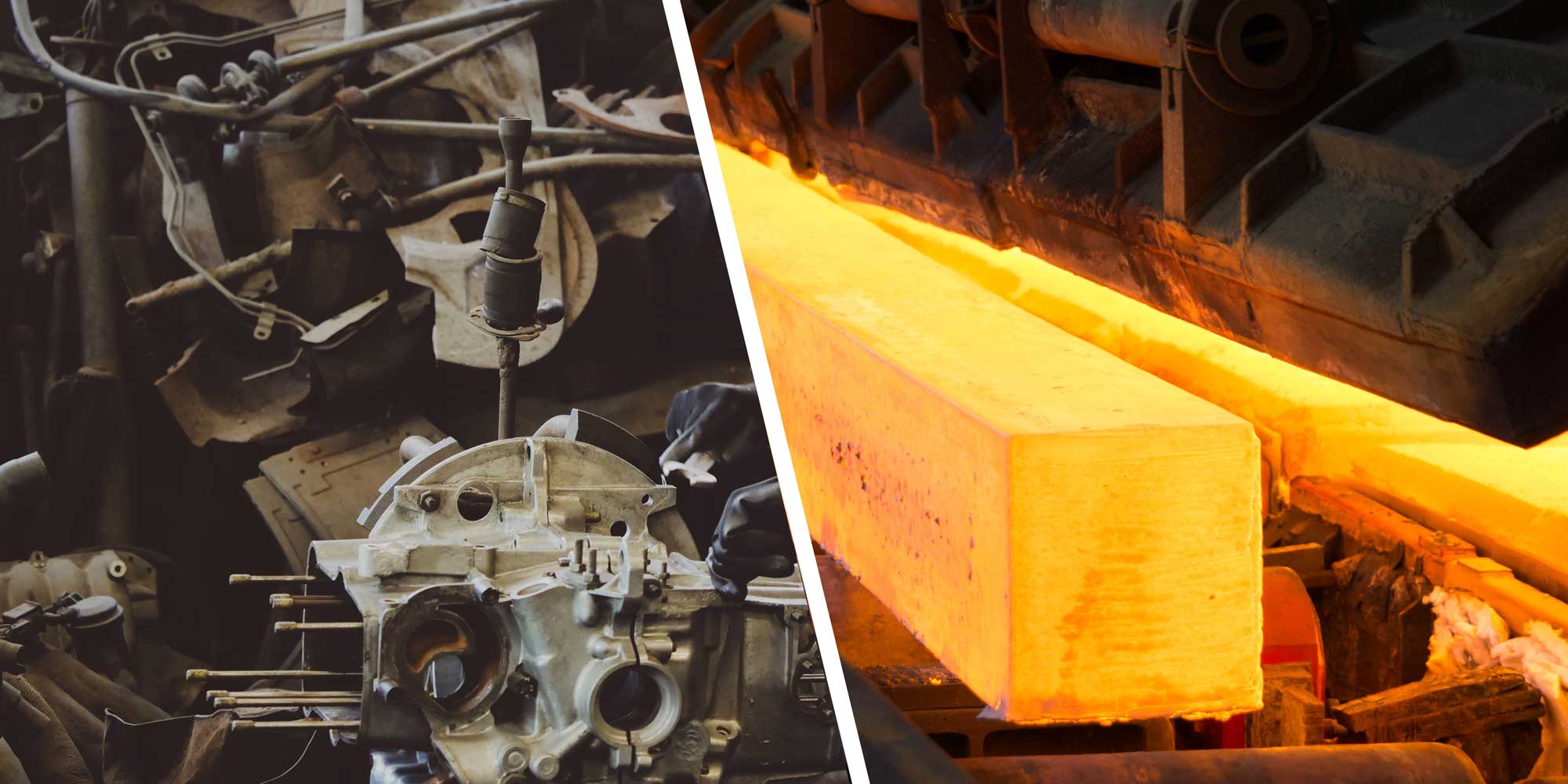Introduction
Metal rolling (steel rolling) is to place metal billet between the gap of a pair of rotary rollers, which can be of various shapes. Due to the compression of the rollers, the metal section will be reduced while the length will be increased. Metal rolling is the most popular processing method used for the production of steels, mainly the steel profiles, plates and tubes. Metal rolling can be classified into two categories, hot rolling and cold rolling.

Purposes of Metal Rolling
Metal rolling serves for two purposes. On the one hand, it is used to obtain the desired steel shapes, such as plate, strip, wire and various steel profiles. On the other hand, it serves to improve steel internal quality. The common automotive board, bridge steel, boiler steel, pipeline steel, threaded steel, rebar, electrical silicon steel, galvanized plate, tin plate, and the train wheels we see in our life are all processed by the metal rolling technique.
Classification of Metal Rolling Method
Metal rolling can be classified into longitudinal rolling, cross rolling, skew rolling by movement of the rolling parts.
Longitudinal Rolling
Longitudinal rolling refers to the work rolls rotating in the opposite direction with the longitudinal axis of the rolling piece perpendicular to the roll axis. Longitudinal rolling is the most common metal rolling method used for metal plastic processing. The longitudinal axes of the rollers are parallel to each other. The rolling piece moves along its longitudinal axis, perpendicular to the longitudinal axis of the roll, while the metal extension is carried out mainly along the longitudinal axis of the rolling piece. Longitudinal rolling is applicable to general rolling, plate rolling, strip rolling, profile rolling and wire rolling.
Cross Rolling
Cross rolling is a metal rolling method in which the two rollers rotate in the same direction, with rolling piece in between rotating in the opposite direction and parallel to the roller axis. During processing, the rotary piece is only subjected to pressure in the radial direction.
Skew Rolling
Skew rolling lies between longitudinal rolling and cross rolling. Two or three rollers rotate in the same direction with their longitudinal crossing one another or skewing; the rolling piece is in between rotating along its own axis, meanwhile deforming and moving forward. Skew rolling is mainly used for the piercing and rolling of seamless pipes and the periodic section rolling of steel balls.
Other Classifications
Metal rolling can also be classified into general rolling and special rolling according to the material formation characteristics. For example, periodical rolling, spinning rolling, bending and the like are special rolling methods. In addition, since the rolling products vary from one another in kinds and specifications, some products need to be subjected to several rounds of rolling before becoming the final products. With this, the rolling production is usually divided into two categories, i.e., semi-finished production and finished production.
Metal rolling can also be classified into hot rolling and cold rolling based on the delivery state of metals. Keep following us for more knowledge of hot rolling and cold rolling.
Related
Contact
CIVMATS Co., Ltd. produces high-value stainless steel and nickel alloy raw materials. If you want to know more about nickel alloy, please keep following us. Any requirements or questions about nickel alloy, call CIVMATS!
- Company: CIVMATS CO., LIMITED
- Phone: 86-519-81809659
- Fax: 86-519-81809959
- Email: sales@civmats.com
- Address: 10th Floor, Xin Cheng Nan Du, Wujin District, Jiangsu, China
- Website: www.civmats.com

